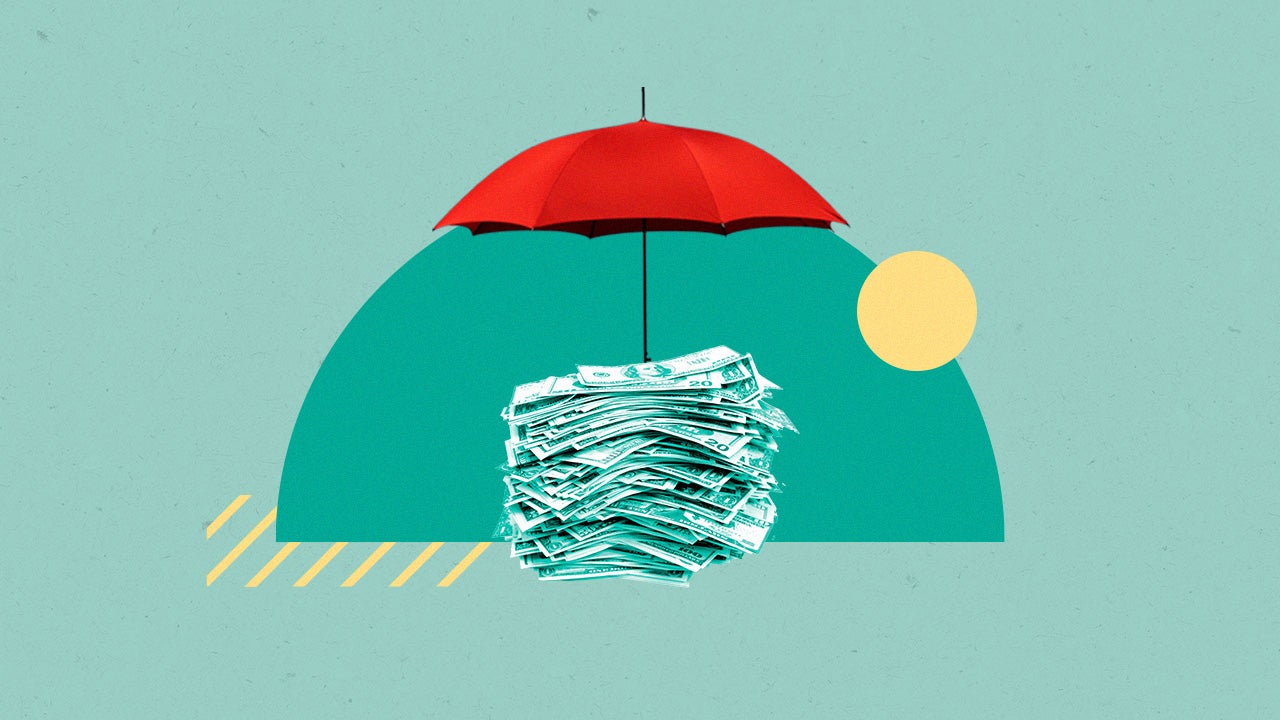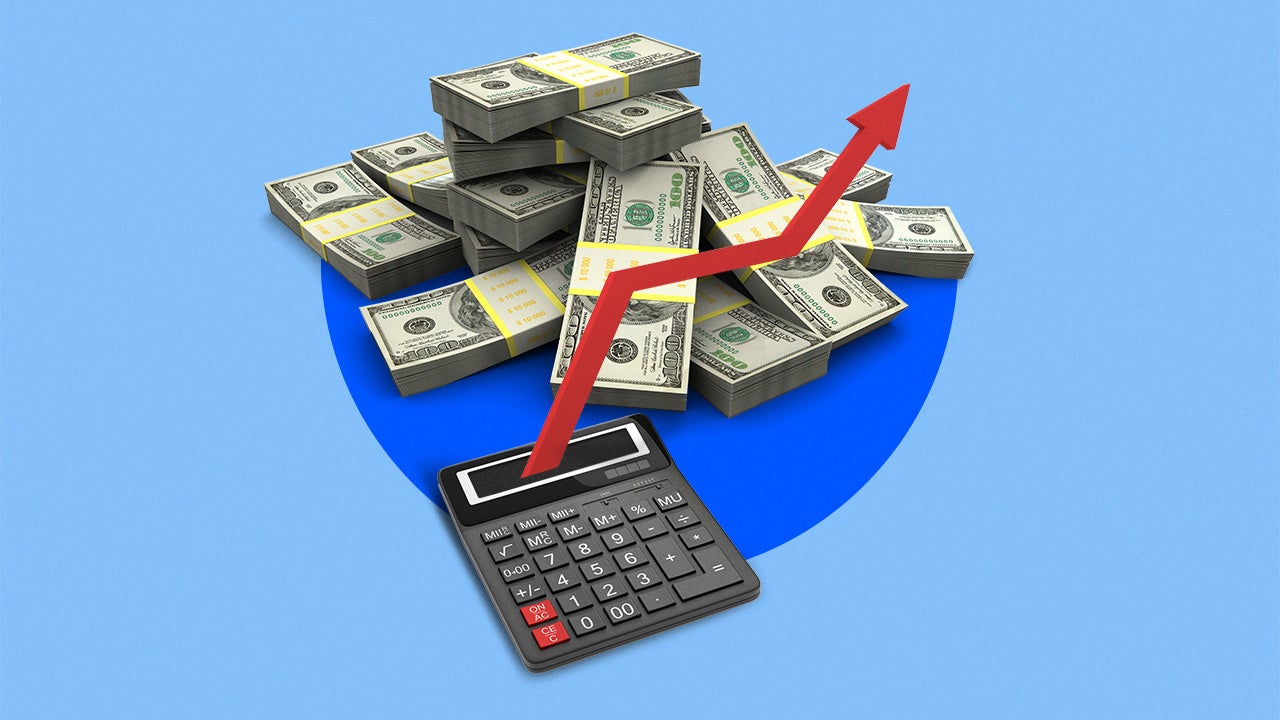8 low-risk ways to earn higher interest

The Bankrate promise
At Bankrate we strive to help you make smarter financial decisions. While we adhere to strict , this post may contain references to products from our partners. Here's an explanation for .
A smart personal finance strategy often involves earning some interest on your money while not taking on too much risk. These days, high-yield savings accounts are one viable option, as some are outpacing inflation due to the Federal Reserve raising its benchmark interest rate to a 23-year high.
In addition to savings accounts, there are plenty of other relatively safe ways to get a return on your funds, whether it’s through rewards, bonuses or stable investments.
In all, here are eight low-risk strategies to consider.
1. Switch to a high-interest savings account
Some banks offer special, high-interest savings accounts that earn better rates than traditional accounts.
One of the best places to look for high-interest savings accounts is an online-only bank. Online banks, which save significant costs by not having to maintain branches, rarely charge monthly fees. They also typically offer rates that are much higher than those paid by traditional banks.
The best high-yield savings accounts currently earn an annual percentage yield (APY) of 5.35 percent. This is around 10 times the Bankrate national average rate of 0.58 percent on March 25, 2024.
Based on these two rates, if you deposited $5,000 into one account that earns the top yield and another that earns the national average, here’s approximately what it would have earned in interest after one year:
- Interest on an account that earns 5.35 percent APY: $275
- Interest on an account that earns 0.58 percent APY: $29
You’d earn around $246 more by going with the high-yield savings account. Bankrate’s savings account interest calculator is a tool that allows you to plug in dollar amounts, rates of return and timeframes to determine how much your savings can earn.
2. Consider a rewards checking account
Some banks offer rewards checking accounts, which may earn cash back on things you buy with your debit card. Those who make frequent purchases using a debit card would benefit the most from this type of checking account.
Other rewards checking accounts pay higher interest rates, although the balance that earns the elevated rate is often limited. You may also need to jump through some hoops to earn the bonus rate.
For example, Consumers Credit Union (CCU) offers interest rates as high as 5 percent APY on balances of up to $10,000 for its Rewards Checking account. However, to earn that yield, you’ll need to meet all the following requirements:
- Sign up for electronic statements
- Make at least 12 debit card purchases per month
- Receive an aggregate of $500 or more during the statement cycle in direct deposits, mobile check deposits or ACH credits to the account
- Spend $1,000 or more in CCU Visa credit card purchases per month
If you choose to use a rewards checking account, make sure that the requirements to earn the elevated interest rate are easy for you to meet. Otherwise, you might earn less interest than you would with a standard savings account.
3. Consider certificates of deposit
Certificates of deposit (CDs) typically offer higher interest rates than traditional savings accounts. However, there’s less flexibility to withdraw your money from a CD.
When you put funds into a CD, you have to agree to leave the money in the account for a set period of time, called the term. For example, if you open a one-year CD, you have to leave the money in the account for a full year. If you withdraw your deposit before the term expires, you are subject to an early withdrawal penalty.
One benefit of CDs is that you lock in the interest rate when you open the CD. Even if market rates drop, you’ll keep earning the same rate. On the other hand, if rates rise, you’ll be stuck earning the lower rate until the CD matures.
Once the CD term ends, you can withdraw your money or roll it into a new CD. If you roll the balance into a new CD, you have to wait for that CD to mature before having another opportunity to make a penalty-free withdrawal.
4. Build a CD ladder
CD ladders combine the higher rates of CDs with some of the flexibility of savings accounts.
Laddering CDs involves opening multiple ones with staggered maturity dates. For example, you could open a one-year CD each month for a year, and then one will mature each month the following year. Bankrate’s CD ladder calculator can help you build a CD ladder that’s right for you.
In this example, instead of locking up all of your money in a single one-year CD, you can get access to portions of it at regular monthly intervals and avoid having to pay a penalty for early withdrawals in the event you need your money.
How you structure your CD ladder depends on how much flexibility you’re willing to sacrifice for higher yields and how frequently you want to have access to your funds. For example, a five-year CD ladder would include the purchase of five CDs with different terms: a one-year CD, a two-year CD, a three-year CD, a four-year CD and a five-year CD. This way, one of your five CDs would be maturing every year — and when each CD matures, you could reinvest the funds into another high-yielding CD.
5. Take advantage of bank bonuses
Many banks offer introductory bonuses for new customers who sign up for an account and meet a few requirements. Usually, checking account bonuses require you to set up regular direct deposits and make a minimum number of transactions each statement period.
For people with some savings already set aside, bank account bonuses can be an easy way to increase your earnings. These bonuses typically ask new customers to deposit a minimum amount to the account and keep it there for a certain period of time. In short, you could boost your savings balance by opening a new account and funding it with savings held at another bank.
For example, you might see a bonus offering $300 if you deposit $10,000 and maintain that balance in the account for at least three months. Earning such a bonus would be equivalent to earning a 3 percent APY in a savings account for a year (assuming the APY didn’t fluctuate and you didn’t add money to the account or withdraw from it).
Even larger bonuses of $400 and $500 are available from some banks, although higher minimum deposits are usually required to earn those.
Be sure to read all the fine print. Some banks will charge a fee if you don’t meet certain requirements or try to close the account too quickly after opening it. Some banks might even make you forfeit the reward if you close the account soon after getting the bonus.
6. Try a money market account
Money market accounts offer a mixture of the features found in savings and checking accounts. They pay interest, sometimes at higher rates than high-yield savings accounts, while commonly offering check-writing privileges and debit cards that you can use to make withdrawals, with some restrictions.
The drawback of money market accounts is that they may have higher fees and minimum balance requirements than savings accounts. There’s also no guarantee that your bank’s money market account pays a better rate than its savings account.
7. Check with your local credit union
Unlike banks, credit unions are not-for-profit financial institutions owned by the people who hold accounts there. This means credit unions work for the benefit of account holders instead of shareholders.
In some cases, that can translate into lower fees, better account perks and higher interest rates. If you have a credit union near you, check the rates it offers, as you might be able to get a good deal.
If you don’t live near any credit unions and tend not to do any of your banking in person, consider a credit union that allows you to apply and perform all of your banking transactions online.
While some credit unions are relatively easy for anyone to join, others are only open to people who live in a certain region or work in a given industry.
8. Consider buying government bonds
If you don’t mind a little risk or restriction on your withdrawals, you can put your money into bonds instead of a traditional savings account.
Buying a bond is like making a loan to the company or government that issues it. When the bond matures, you get your principal back plus any interest you earn. You can buy U.S. Savings or Treasury bonds, or bonds issued by major companies. Each has different interest rates and repayment terms, with riskier bonds tending to offer higher rates. Typically, yields are higher on bonds with longer terms and corporate bonds that have higher default risk.
One thing to keep in mind with bonds is that they can drop in value if market rates increase. (The price of a bond moves inverse to its interest rate.) As a result, if you wind up selling your bond to someone else before it matures, you might have to sell it for less than you paid. Still, bonds are far less risky than stocks, making them a good way to increase the yield your savings earns while taking a little more risk.
With the rate of inflation running higher than usual, many bond investors have turned to Series I bonds. As inflation increases, the interest rate on these bonds rises along with it, which ensures your money doesn’t lose purchasing power over time. Likewise, however, the interest rate on these bonds also decreases when inflation goes down.
Earning higher interest: Which option is right for you?
Each of these options has the potential to increase the amount of interest your savings earns. But which interest-bearing option is right for you depends on your needs, risk tolerance, and the effort you’re willing to put in. Ask yourself these questions:
Will I possibly need quick access to the money? If you’re working to build up an emergency fund, your best bet is often to stick with a high-yield savings account where you can withdraw the money anytime without a penalty.
Rather, if you’re saving for the planned purchase of a house in several years, a CD that pays a competitive yield can be a good investment. Another option for money not needed in the near term can be higher-yielding bonds, which are likely worth holding onto until after they mature.
How much debt do I have? If you already have an adequate emergency fund, consider focusing on paying down any high-interest debt before devoting additional funds to other investments.
Am I able to make the required commitment? Sometimes, a bit of effort and attention to detail are needed. For instance, bank bonuses can be very lucrative, but they often require you to take multiple steps to earn the bonus.
Take some time to think about which of these strategies is right for you.
Bottom line
Earning interest in a low-risk way is often possible through vehicles such as a high-yield savings account, money market account, CD, bonds and bank bonuses. These relatively safe strategies can help you boost interest earnings while shielding you from more volatile investments that may exceed your risk tolerance.
Related Articles





